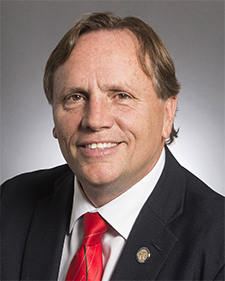Since the COVID-19 pandemic began, state and federal officials have considered child care to be an essential industry, one that largely kept its doors open when K-12 schools went remote and restaurants shuttered.
But the industry struggled in the face of higher costs for cleaning, supplies and lower enrollment revenue since many parents opted to have kids at home. As a result, Minnesota lawmakers and members of Congress approved huge amounts of cash to help providers stay in business, saying childcare was crucial to keeping the economy afloat and to rebuilding after the pandemic.
Last week, at the request of a Republican legislator, the Minnesota Department of Human Services tallied up all the stimulus money it has oversight over in the child care sector that has been approved since the start of 2020: $858 million.
The money represents unprecedented spending on the industry, and only a small slice of the pandemic relief money distributed. It also illustrates the complex web of spending that has followed the numerous state and federal stimulus programs. DHS says the money has been spent on 30 different initiatives, and doesn’t include other government money for child care that went through different state agencies or local governments, or was dedicated for the public pre-school system.
$322 million in 2020
DHS says there are 9,123 child care providers under its purview, which does not count pre-kindergarten programs in public schools.
In 2020, the child care industry in Minnesota got $321.7 million administered by DHS. First was roughly $41.1 million, given out between April and June as direct payments to providers. The cash came from the state’s general fund and Minnesota’s share of the $2.2 trillion federal CARES Act, passed in March of 2020 under then-President Donald Trump.
But the rest stemmed from Minnesota’s cut of the CARES Act passed and the $900 billion stimulus passed in December of 2020.
The state distributed $199.6 million from July 2020 through May of 2021 in direct payments to child care providers as part of the state’s Public Health Support Funds for the industry. Minnesota also used $20.58 million to increase the maximum reimbursement rate to providers in the Child Care Assistance Program, a subsidy for low-income families. The state’s previously meager rates left the program out of compliance with federal standards and facing federal sanctions. Another $40 million went into the Basic Sliding Fee program within CCAP.
Finally, roughly $19.3 million went into other smaller child care support efforts, including $5 million aimed at building more capacity in the child care sector and $4.95 million to pay an alternative child care provider when a kid’s typical program is closed because of COVID-19.
Even more money in 2021
In 2021, Minnesota’s child care industry got an even bigger influx of cash: $537 million. The money came from the state’s portion of the $1.9 trillion American Rescue Plan passed in 2021 under President Joe Biden, with the largest share going toward child care “stabilization” grants, meant to help providers and offer employees extra compensation, such as pay and benefits.
The state also used roughly $160 million to once again hike the maximum CCAP rate and spent $72.9 million on the Basic Sliding Fee program, helping reduce a wait list for the subsidy.
Another $22.5 million went for upgrades to child care facilities, such as renovations. DHS listed 18 other smaller uses of the ARP money, including $7.65 million for technology updates in child care licensing and CCAP, $3.78 million to “modernize” license regulations for child care providers and $3 million to help low-income people with job skills training, career counseling and job placement in the child care field.
The DHS report is not exhaustive, either. It doesn’t list money that goes to other forms of child care, such as the Head Start early learning program administered by the state Department of Education. Local governments also could have spent stimulus money on child care efforts, too.
Debate over more spending continues
State Sen. Jim Abeler, an Anoka Republican who chairs the Senate’s Human Services Reform Finance and Policy Committee, said last week he asked DHS to total the spending on child care ahead of a hearing on the stabilization grants.

Meanwhile, child care advocates say the system is still in need of help, due in part to what they say is a broken economic model that leads to both high tuition for parents and often terrible wages for workers. Congress is considering some form of universal child care in its latest spending bill being debated in Washington, D.C.

In the most recent $52 billion two-year budget, the state plans to spend nearly $21 billion for the pre-k through K-12 system.
“We do not value early care and learning, we do not fund it to the same degree,” Pinto said. “Until and unless we actually recognize that discrepancy, we’re going to be in a really tough spot for everyone in this sector.”


0 Commentaires